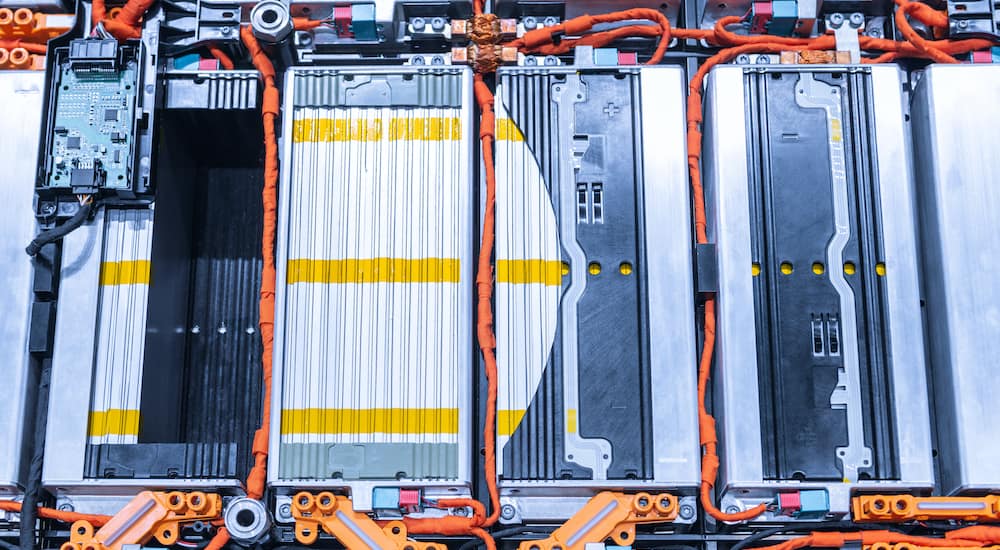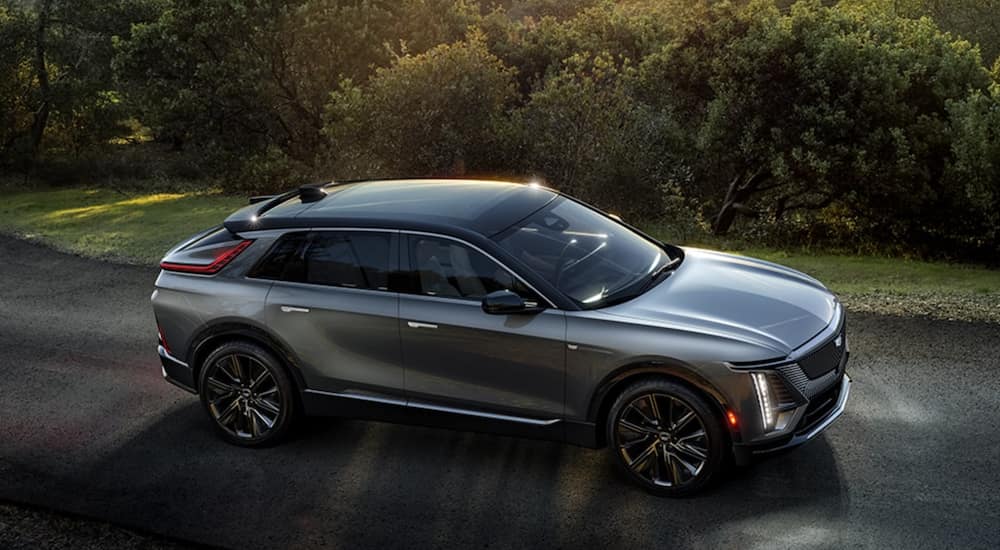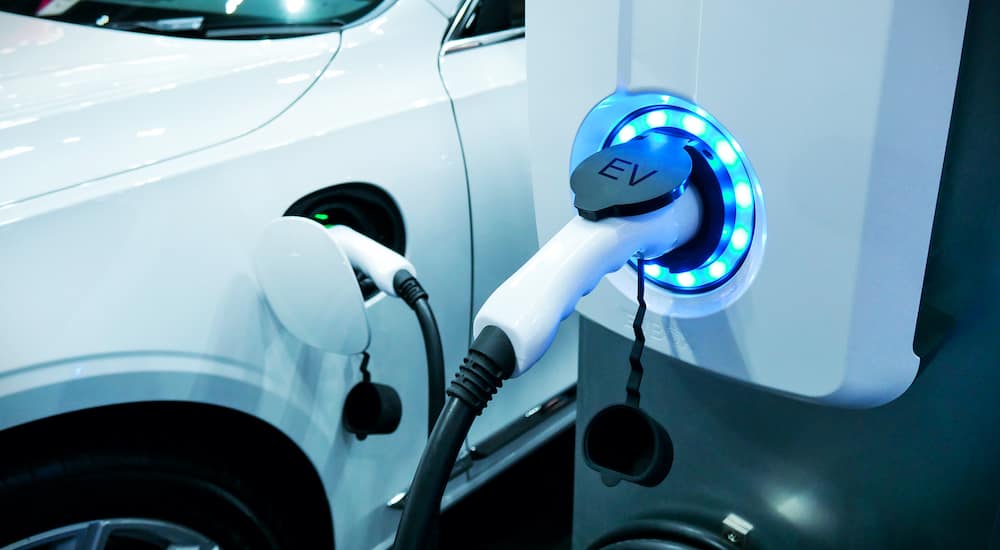General Motors has publicized its plans to revolutionize its entire company. In less than 15 years, they will transition every vehicle in every one of their sub-brands away from gasoline and diesel and instead become the largest American manufacturer of electric vehicles. This promise wasn’t just publicity fluff, either. General Motors is actually investing a great deal in their plans to go electric, and the results of their across-the-board changes could hit your local GM dealer before we know it. Why the sudden faith in an American manufacturer that’s been through its fair share of struggles, including failed vehicles that are lost to history?
Consider their latest announcement: GM is building a brand-new, $2.3 billion battery plant in Tennessee. This new site will not only create American jobs but produce batteries and motors for GM’s entire product lineup in an attempt to meet their ambitious 2035 deadline. GM has partnered with the Japanese company LG to build and execute the factory, and they will work hand-in-hand in the new Tennessee factory to construct Ultium lithium-ion batteries.
This new factory will directly correlate with GM’s existing Spring Hill, TN, vehicle assembly plant, which is currently being reconfigured to produce nothing but electric vehicles. It’s nothing short of momentous that General Motors is building a plant dedicated solely to producing EV batteries. Even Tesla should be nervous about this development. As Motortrend pointed out, General Motors’ 70 GWh plant is projected to be over twice the size of Tesla’s existing Nevada plant. This is to be expected; given their large lineups within each of GM’s sub-brands – GMC, Cadillac, and Chevrolet – there’s quite a bit of ground to cover.
According to GM Chief Executive Mary Barra, “The addition of our second all-new Ultium battery cell plant in the U.S. with our joint venture partner LG Energy Solution is another major step in our transition to an all-electric future.” Therefore, General Motors’ Tennessee plant will help fulfill the vacuum left behind the absence of future gas, diesel, or hybrid-powered vehicles, which GM has promised to halt completely by 2035. This upcoming battery facility is another step in the direction toward fulfilling their 100% electric vehicles promise, starting with a brand-new Cadillac.
What’s in the Works?
The combined General Motors/LG plant will produce electric batteries for the upcoming 2023 Cadillac Lyriq EV, an electric midsize SUV. Details of the Lyriq so far include a projected driving range of up to 300 miles. It’s also been widely discussed for its incredible design, a futuristic exterior that’s sleek but sophisticated while also lending itself to classic Cadillac aesthetics.
As GM’s entry into the luxury electric car market, competitors are many. However, its details sound exciting so far, including a projected low-priced base model and estimated horsepower ratings of about 340, as well as quick electric-powered acceleration. Of course, the model will come with Cadillac’s signature, refined cabin, and generous safety technology.
In the future, GM will likely retool the facility to provide batteries for other Cadillac, Chevrolet, or GMC vehicles. However, the current knowledge is that their upcoming Tennessee battery plant will dedicate its output to the 2023 Lyric EV. The site is expected to produce battery packs for over half a million vehicles each year so GM can easily respond to consumer demand.
Concerns
The news of the upcoming battery plant in Tennessee has inspired some widespread excitement. The boost to the local economy is sure to be massive, as GM’s plant will employ at least 1,300 individuals. At the very least, the news has brought attention to GM and their plans to transform 100% of their vehicles to electric power. However, this news didn’t come without its fair share of naysayers.
Namely, some have pointed to the last time GM invested in a huge plant in Tennessee. Back in the 1980s, GM broke ground on a new factory dedicated to its small car sub-brand, Saturn. GM had promised that the new production center would improve quality and cement the American automaker as the #1 manufacturer of small cars, which were then a major, in-demand body style.
However, most of us know how that went. The results were disappointing, both for American car shoppers and GM itself, who undercut their projected output and didn’t meet their overall goals for the Saturn sub-brand. Eventually, Saturn hit the dirt, and the largest effect their Tennessee plant had was a huge uptick in real estate prices. Something is different this time, though. While these concerns are valid – it’s hard not to imagine history repeating itself – we have a more recent, notable precursor to consider as well.
Michigan and Ohio Plants
Those who fear the potential consequences of GM’s investment in Tennessee should look to General Motors’ existing battery development center in Michigan. It’s among the most influential battery facilities in the world, dedicated to enhancing all aspects of automotive batteries: durability, longevity, power output, and more. They’re currently working on the second generation of Ultium batteries that can provide a stellar driving range of up to 600 miles. This development center not only makes General Motors a global leader in the engineering of electric batteries but represents something even more promising: GM’s commitment to producing their own batteries “in-house” rather than outsourcing them, like Ford and other manufacturers do. This means that, so long as there is a demand for GM’s electric vehicles, their supporting US plants, including the upcoming Tennessee battery plant, just might be a success.
This consumer demand is notably high, too. General Motors is already the #1 US automaker, and the response to their all-electric by 2035 commitment has been largely positive. GM’s projected sales are significant, with a target of more than 1 million EVs globally in 2025. Needless to say, a new battery factory is necessary to fulfill this demand.
There are certainly competitors in the electric vehicle market, although as of this date, only Tesla meets GM’s plans for an all-electric future. Tesla’s vehicles are famously luxurious with exorbitant price tags to match, so GMC and Chevy EVs under the GM umbrella are likely to be more appealing to a mass market. The Tennessee site won’t be GM’s first battery production facility, either. In fact, this is the second plant after their existing location in Lordstown, Ohio, which will begin battery production in early 2022. GM is also expected to build at least two other North American plants as well.
Looking Forward
We happen to feel optimistic about this development as well. General Motors has gained favor with its commitment to go electric, and they’re clearly meeting these promises as they install more plants. GM and LG are currently scheduled to open their new, joint Tennessee battery factory in late 2023, and there are even more to come in the future.
It bears acknowledging that as of 2021, electric vehicles only represent a small segment of the total worldwide automotive market. However, changes in government policy, growing interest in electric car brands, and environmental concerns are setting the auto market on a collision course with success.






